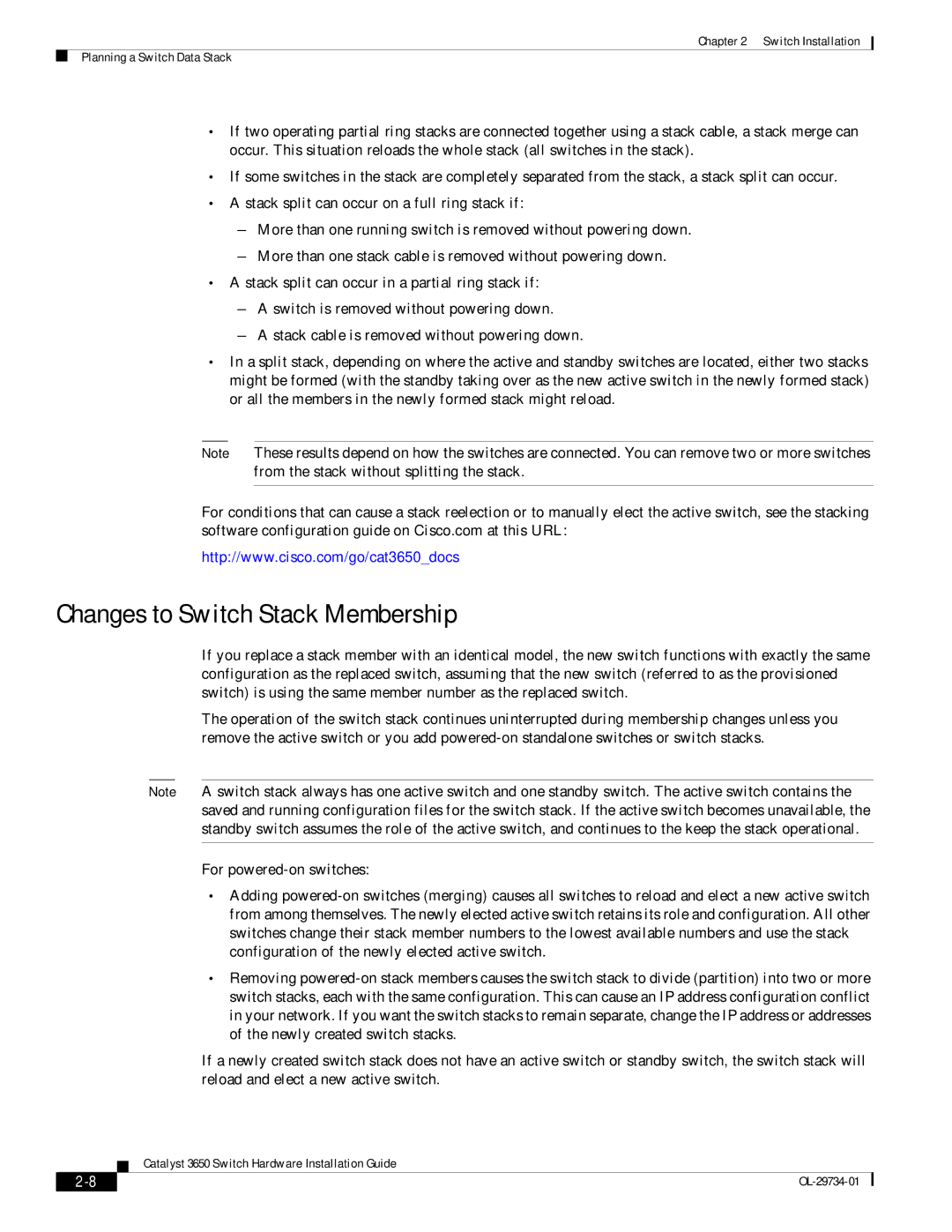
Chapter 2 Switch Installation
Planning a Switch Data Stack
•If two operating partial ring stacks are connected together using a stack cable, a stack merge can occur. This situation reloads the whole stack (all switches in the stack).
•If some switches in the stack are completely separated from the stack, a stack split can occur.
•A stack split can occur on a full ring stack if:
–More than one running switch is removed without powering down.
–More than one stack cable is removed without powering down.
•A stack split can occur in a partial ring stack if:
–A switch is removed without powering down.
–A stack cable is removed without powering down.
•In a split stack, depending on where the active and standby switches are located, either two stacks might be formed (with the standby taking over as the new active switch in the newly formed stack) or all the members in the newly formed stack might reload.
Note These results depend on how the switches are connected. You can remove two or more switches from the stack without splitting the stack.
For conditions that can cause a stack reelection or to manually elect the active switch, see the stacking software configuration guide on Cisco.com at this URL:
http://www.cisco.com/go/cat3650_docs
Changes to Switch Stack Membership
If you replace a stack member with an identical model, the new switch functions with exactly the same configuration as the replaced switch, assuming that the new switch (referred to as the provisioned switch) is using the same member number as the replaced switch.
The operation of the switch stack continues uninterrupted during membership changes unless you remove the active switch or you add
Note A switch stack always has one active switch and one standby switch. The active switch contains the saved and running configuration files for the switch stack. If the active switch becomes unavailable, the standby switch assumes the role of the active switch, and continues to the keep the stack operational.
For
•Adding
•Removing
If a newly created switch stack does not have an active switch or standby switch, the switch stack will reload and elect a new active switch.
Catalyst 3650 Switch Hardware Installation Guide
|
| |
|
